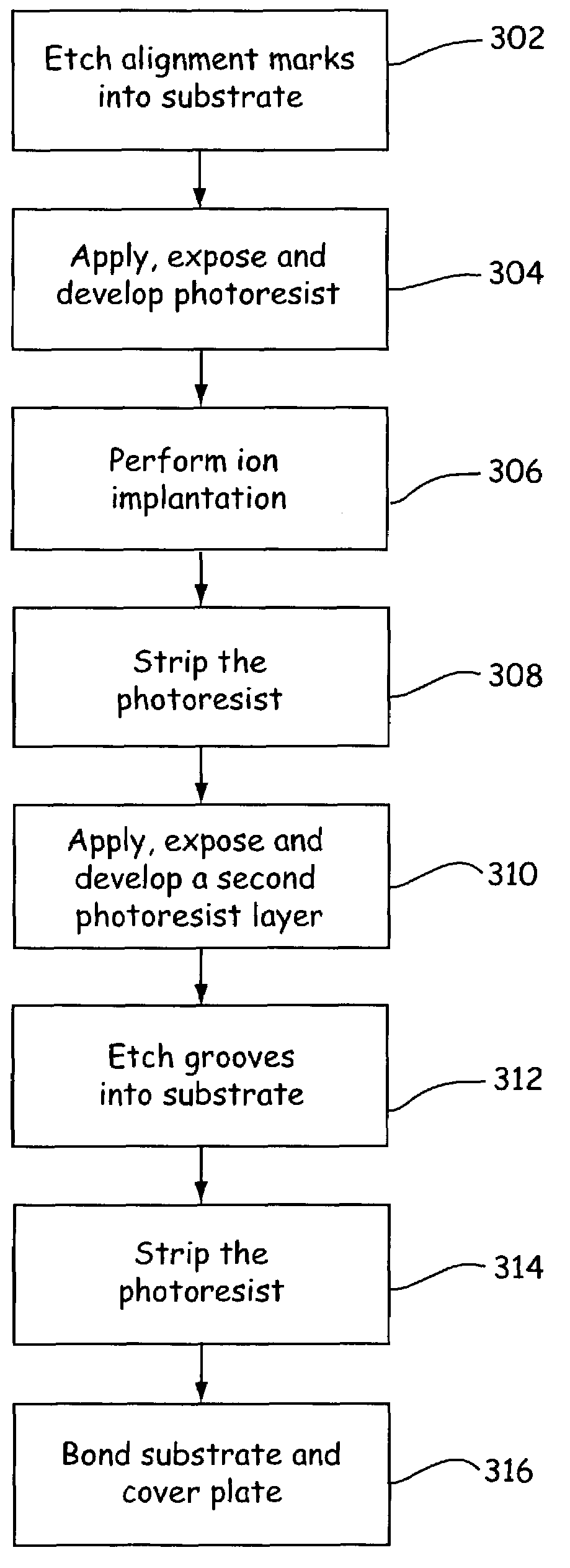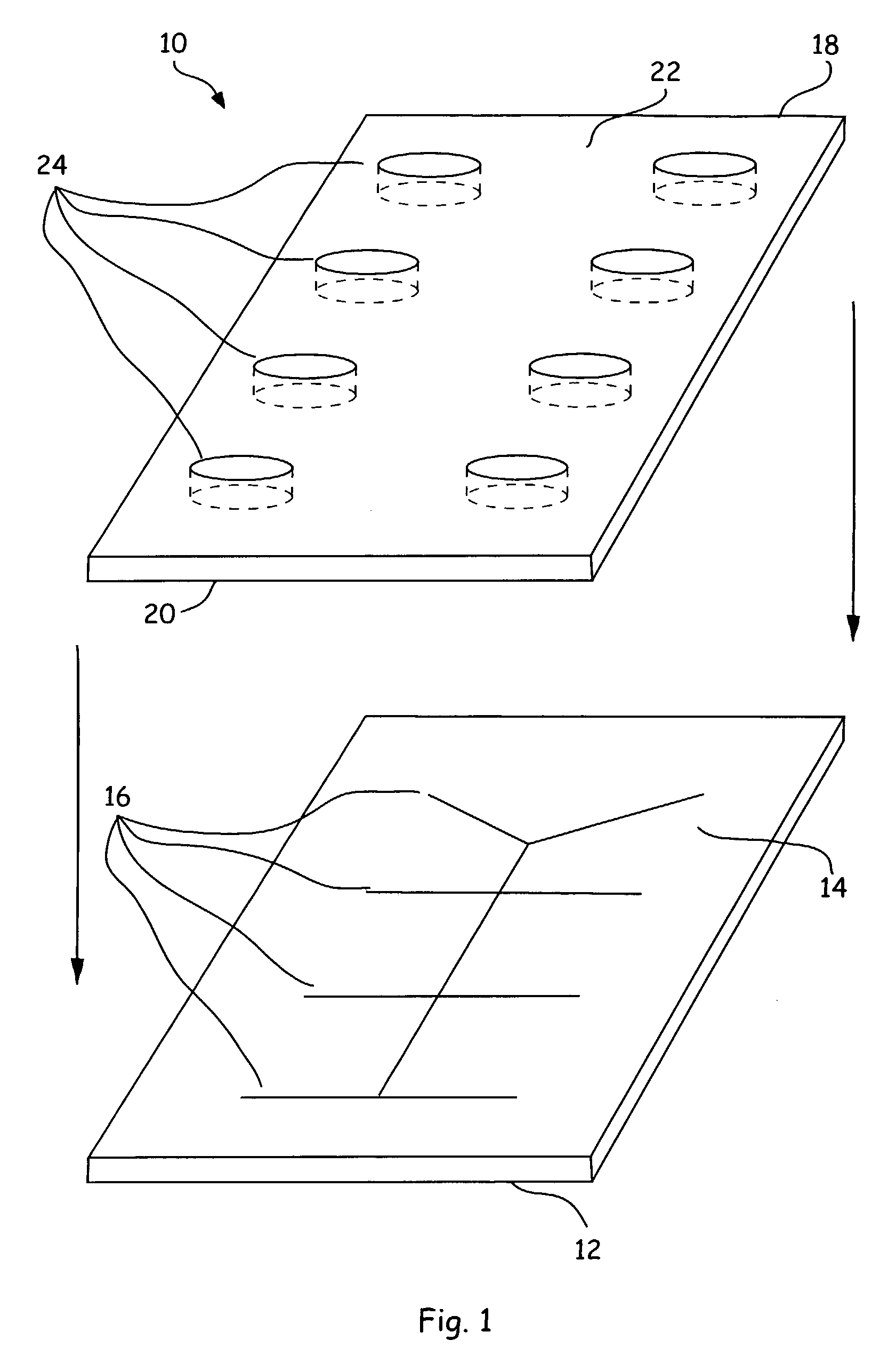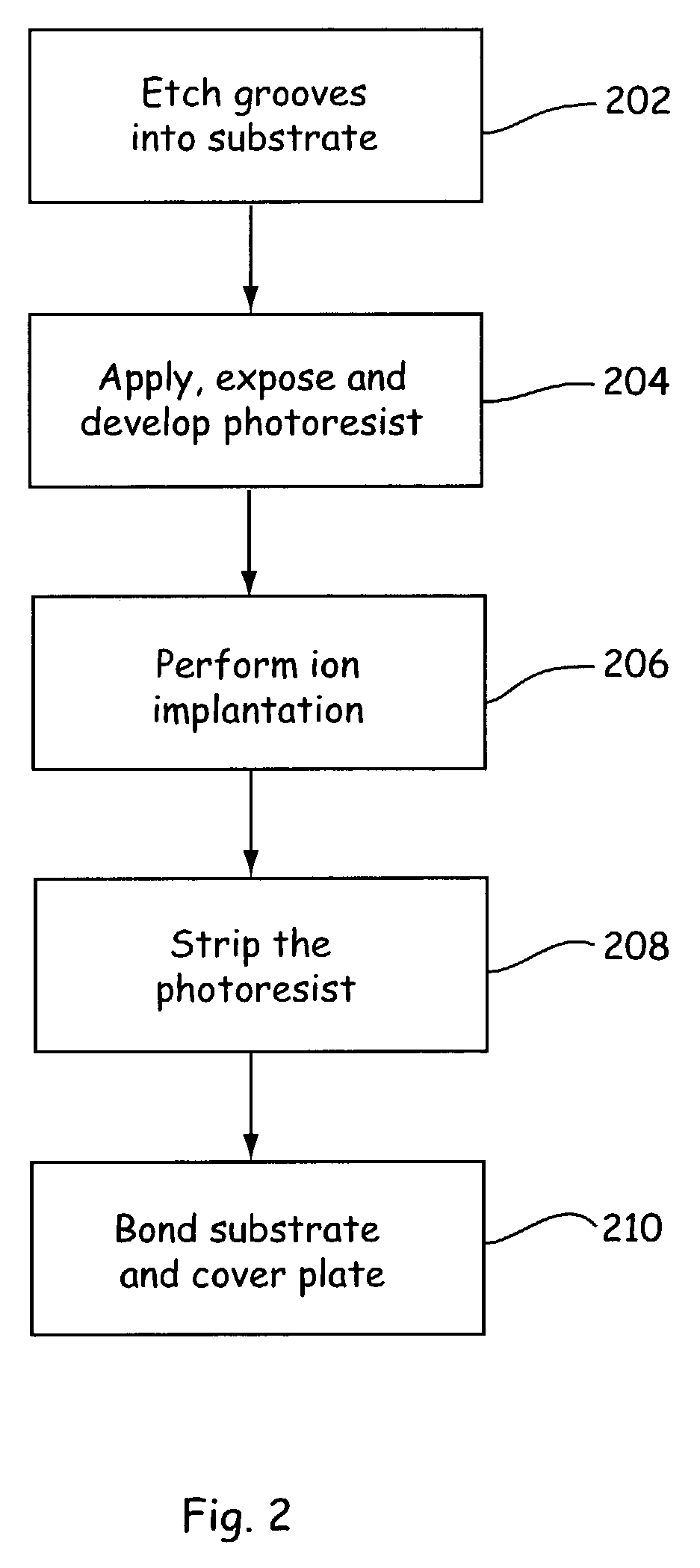Microfluidic device with controlled substrate conductivity
a microfluidic device and conductivity control technology, applied in the direction of positive displacement liquid engine, laboratory glassware, instruments, etc., can solve the problems of short and unpredictable life of these devices, lack of dimensional control needed for fabricating porous membranes between closely spaced microchannels, and inability to accurately and precisely modify the conductivity of small areas
- Summary
- Abstract
- Description
- Claims
- Application Information
AI Technical Summary
Benefits of technology
Problems solved by technology
Method used
Image
Examples
Embodiment Construction
[0021]Embodiments of the present invention will now be discussed in detail. While specific features, configurations and arrangements are discussed, it should be understood that this is done for illustration purposes only. A person skilled in the relevant art will recognize that other steps, configurations and arrangements may be used without departing from the spirit and scope of the invention. It should be appreciated that the microfluidic devices in accordance with the present invention can be used to perform a variety of experiments and operations, and thus the techniques described herein could be used in connection with devices for such other functions.
[0022]An exploded view of a microfluidic device in accordance with the invention is shown in FIG. 1. The microfluidic device 10 comprises two layers: a substrate 12 and a cover plate 18. The substrate 12 may be made of a variety of materials, including quartz, glass, polymer, ceramic or even semiconductor materials. The substrate ...
PUM
| Property | Measurement | Unit |
|---|---|---|
| size | aaaaa | aaaaa |
| physical separation distance | aaaaa | aaaaa |
| physical separation distance | aaaaa | aaaaa |
Abstract
Description
Claims
Application Information
 Login to View More
Login to View More - R&D
- Intellectual Property
- Life Sciences
- Materials
- Tech Scout
- Unparalleled Data Quality
- Higher Quality Content
- 60% Fewer Hallucinations
Browse by: Latest US Patents, China's latest patents, Technical Efficacy Thesaurus, Application Domain, Technology Topic, Popular Technical Reports.
© 2025 PatSnap. All rights reserved.Legal|Privacy policy|Modern Slavery Act Transparency Statement|Sitemap|About US| Contact US: help@patsnap.com



